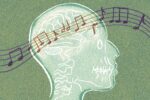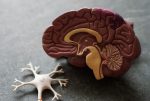Physical fitness is given a lot of attention, and for a good reason. By preventing heart disease and diabetes, a healthy body can help you stay independent as you age. However, mental health is equally as essential as physical health and should not be overlooked. Incorporating mental dexterity exercises, whether you complete a Sudoku puzzle or play bingo, can help you gain the long-term benefits of a sharper mind and a healthier body. Mental fitness entails maintaining good mental and emotional health.
It’s natural for the brain to slow down as we become older. We tend to be less physically active, which can impact our mental activity. As a result, we should exercise often and consume a nutritious diet in addition to keeping our brains engaged. The process of neurogenesis, or the formation of new brain cells, is aided by maintaining our physical health. Exercise also improves blood circulation to the brain. Next, this article will look at the specific benefits of keeping your brain active.
- It reduces your risks of developing dementia and helps to slow down the advancement of dementia if you already have it.
- It helps you remember things.
- Physical activity creates feel-good chemicals that improve your self-esteem and provide you with more energy.
- Cortisol is released when we perform anything active, and it helps us regulate stress. Physical activity also provides your brain something to focus on, which can help you cope with unpleasant situations.
These are but a few of the benefits of keeping your mind active, but how do we achieve the above?

Regular Exercise
Your mind and body are inextricably linked. What is good for the body is also good for the intellect. Even if it’s just a simple walk, regular exercise can help you improve your memory and cognitive abilities. According to studies, the impact of the foot on the ground during a walk sends pressure waves through the arteries, improving blood flow and resulting in a better mind.
Continue Education
In old age, a higher level of education is linked to improved mental performance. Experts believe that increased education might help people maintain their memory by instilling the habit of being cognitively active. Mental activity is thought to trigger systems that assist the preservation of individual brain cells while also stimulating communication between them. In addition, many people have professions that require cognitive stimulation. Additional strategies to keep your mind sharp include pursuing a hobby, learning a new skill, volunteering and mentoring.
Completing Puzzles
In research, jigsaw puzzles have been shown to use a variety of cognitive capacities and protective variables for visuospatial cognitive aging. To put it another way, when assembling a jigsaw puzzle, you must study individual pieces and determine how they fit into the overall picture. This could be a fantastic way to extend and challenge your intellect.
Map Drawing
Test your memory by drawing a map of your town or neighborhood from memory, even if you think you can navigate the streets of your city with your eyes closed. Include important thoroughfares, prominent side streets and local landmarks in your list. Then, compare your memory map to an actual map of the area once you’ve finished.

If you found this exercise too simple, try drawing a less familiar location from memory, such as a map of the entire United States or Europe, and identifying each state or country.
Eating Right
A diet rich in fruits, vegetables and whole grains, as well as low in saturated fat and sugar, can help protect brain networks. Studies show that consuming various nutritional foods, such as fruits, vegetables, nuts, fatty fish and yes, even a daily glass of wine, sharpens the intellect, develops new brain cells and prevents mental deterioration.
A Helping Hand
Consider challenging yourself to execute chores such as eating or writing with your left hand if you’re right-handed and vice versa. By using your non-dominant hand, you can perplex your brain and push it to participate in novel ways. When your dominant hand is your right, using your left-hand forces your brain to think more about your movements, forcing it out of auto-pilot mode.
Using your non-dominant hand can be difficult and exhausting at first, but this is a good thing. Our brains will be hard at work developing new learning pathways to help us become more efficient at performing activities with our non-dominant hands. In addition, learning to use your non-dominant hand more often might have physical benefits as well, such as preventing repetitive strain injury.
















